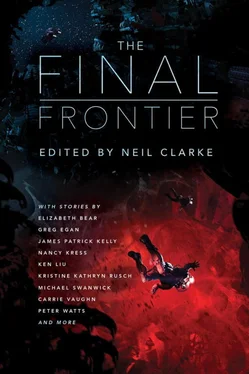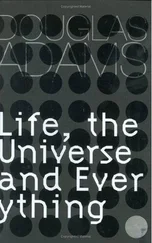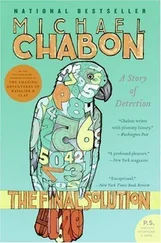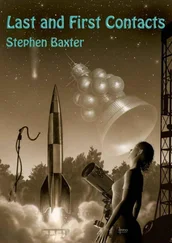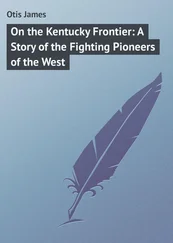The gamma ray lasers shut down, the Zeno effect withdrew its prohibitions. For the time it took a beam of light to cross a neutron, the needle sat motionless in space. Then it began to burn, and it began to move.
The needle was structured like a meticulously crafted firework, and its outer layers ignited first. No external casing could have channeled this blast, but the pattern of tensions woven into the needle’s construction favored one direction for the debris to be expelled. Particles streamed backward; the needle moved forward. The shock of acceleration could not have been borne by anything built from atomic-scale matter, but the pressure bearing down on the core of the needle prolonged its life, delaying the inevitable.
Layer after layer burned itself away, blasting the dwindling remnant forward ever faster. By the time the needle had shrunk to a tenth of its original size it was moving at ninety-eight percent of light-speed; to a bystander this could scarcely have been improved upon, but from the needle’s perspective there was still room to slash its journey’s duration by orders of magnitude.
When just one thousandth of the needle remained, its time, compared to the neighboring stars, was passing two thousand times more slowly. Still the layers kept burning, the protective clusters unraveling as the pressure on them was released. The needle could only reach close enough to light-speed to slow down time as much as it required if it could sacrifice a large enough proportion of its remaining mass. The core of the needle could survive only for a few trillionths of a second, while its journey would take two hundred million seconds as judged by the stars. The proportions had been carefully matched, though: out of the two kilograms of matter and antimatter that had been woven together at the launch, only a few million neutrons were needed as the final payload.
By one measure, seven years passed. For the needle, its last trillionths of a second unwound, its final layers of fuel blew away, and at the moment its core was ready to explode it reached its destination, plunging from the near-vacuum of space straight into the heart of a star.
Even here, the density of matter was insufficient to stabilize the core, yet far too high to allow it to pass unhindered. The core was torn apart. But it did not go quietly, and the shock waves it carved through the fusing plasma endured for a million kilometers: all the way through to the cooler outer layers on the opposite side of the star. These shock waves were shaped by the payload that had formed them, and though the initial pattern imprinted on them by the disintegrating cluster of neutrons was enlarged and blurred by its journey, on an atomic scale it remained sharply defined. Like a mold stamped into the seething plasma it encouraged ionized molecular fragments to slip into the troughs and furrows that matched their shape, and then brought them together to react in ways that the plasma’s random collisions would never have allowed. In effect, the shock waves formed a web of catalysts, carefully laid out in both time and space, briefly transforming a small corner of the star into a chemical factory operating on a nanometer scale.
The products of this factory sprayed out of the star, riding the last traces of the shock wave’s momentum: a few nanograms of elaborate, carbon-rich molecules, sheathed in a protective fullerene weave. Traveling at seven hundred kilometers per second, a fraction below the velocity needed to escape from the star completely, they climbed out of its gravity well, slowing as they ascended.
Four years passed, but the molecules were stable against the ravages of space. By the time they’d traveled a billion kilometers they had almost come to a halt, and they would have fallen back to die in the fires of the star that had forged them if their journey had not been timed so that the star’s third planet, a gas giant, was waiting to urge them forward. As they fell toward it, the giant’s third moon moved across their path. Eleven years after the needle’s launch, its molecular offspring rained down onto the methane snow.
The tiny heat of their impact was not enough to damage them, but it melted a microscopic puddle in the snow. Surrounded by food, the molecular seeds began to grow. Within hours, the area was teeming with nanomachines, some mining the snow and the minerals beneath it, others assembling the bounty into an intricate structure, a rectangular panel a couple of meters wide.
From across the light-years, an elaborate sequence of gamma ray pulses fell upon the panel. These pulses were the needle’s true payload, the passengers for whom it had merely prepared the way, transmitted in its wake four years after its launch. The panel decoded and stored the data, and the army of nanomachines set to work again, this time following a far more elaborate blueprint. The miners were forced to look farther afield to find all the elements that were needed, while the assemblers labored to reach their goal through a sequence of intermediate stages, carefully designed to protect the final product from the vagaries of the local chemistry and climate.
After three months’ work, two small fusion-powered spacecraft sat in the snow. Each one held a single occupant, waking for the first time in their freshly minted bodies, yet endowed with memories of an earlier life.
Joan switched on her communications console. Anne appeared on the screen, three short pairs of arms folded across her thorax in a posture of calm repose. They had both worn virtual bodies with the same anatomy before, but this was the first time they had become Noudah in the flesh.
“We’re here. Everything worked,”Joan marveled. The language she spoke was not her own, but the structure of her new brain and body made it second nature.
Anne said, “Now comes the hard part.”
“Yes.” Joan looked out from the spacecraft’s cockpit. In the distance, a fissured blue-gray plateau of water ice rose above the snow. Nearby, the nanomachines were busy disassembling the gamma ray receiver. When they had erased all traces of their handiwork they would wander off into the snow and catalyze their own destruction.
Joan had visited dozens of planet-bound cultures in the past, taking on different bodies and languages as necessary, but those cultures had all been plugged into the Amalgam, the metacivilization that spanned the galactic disk. However far from home she’d been, the means to return to familiar places had always been close at hand. The Noudah had only just mastered interplanetary flight, and they had no idea that the Amalgam existed. The closest node in the Amalgam’s network was seven light-years away, and even that was out of bounds to her and Anne now: they had agreed not to risk disclosing its location to the Noudah, so any transmission they sent could be directed only to a decoy node that they’d set up more than twenty light-years away.
“It will be worth it,” Joan said.
Anne’s Noudah face was immobile, but chromatophores sent a wave of violet and gold sweeping across her skin in an expression of cautious optimism. “We’ll see.” She tipped her head to the left, a gesture preceding a friendly departure.
Joan tipped her own head in response, as if she’d been doing so all her life. “Be careful, my friend,” she said.
“You too.”
Anne’s ship ascended so high on its chemical thrusters that it shrank to a speck before igniting its fusion engine and streaking away in a blaze of light. Joan felt a pang of loneliness; there was no predicting when they would be reunited.
Her ship’s software was primitive; the whole machine had been scrupulously matched to the Noudah’s level of technology. Joan knew how to fly it herself if necessary, and on a whim she switched off the autopilot and manually activated the ascent thrusters. The control panel was crowded, but having six hands helped.
Читать дальше
